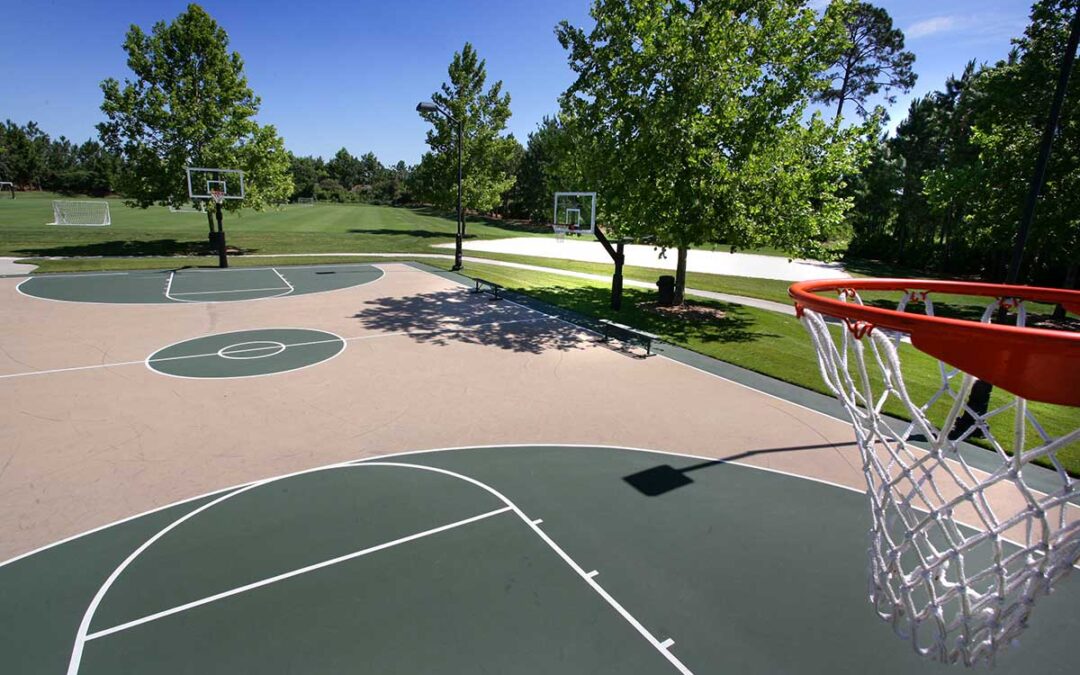Creating an outdoor basketball court is an exciting project that can bring countless hours of enjoyment to your family and community. Whether you’re a seasoned player or just want a space for recreational play, designing your outdoor basketball court requires careful consideration of several key factors. Here’s a guide to help you through the process.
1. Importance of Choosing the Right Surface Material
One of the most critical aspects of designing an outdoor basketball court is selecting the right surface material. The surface you choose affects both the durability of the court and the performance of the players. Here are some popular options:
- Asphalt: A common choice for outdoor basketball courts, asphalt provides a smooth, durable surface that can withstand various weather conditions. It is relatively affordable and can last for many years with proper maintenance.
- Concrete: This material offers excellent durability and is ideal for areas with heavy use. Concrete courts provide a firm playing surface, but they can be unforgiving on players’ joints, so it’s essential to consider this if you have younger players or those prone to injuries.
- Sports Tiles: These interlocking tiles are designed specifically for sports and provide excellent grip and shock absorption. They come in various colors and designs, allowing for customization while ensuring a safe playing environment.
Selecting the right surface material is vital not only for performance but also for safety and maintenance. Make sure to choose a material that suits your climate and intended use to maximize the longevity of your outdoor basketball court.
2. Space Requirements and Optimal Dimensions
When designing an outdoor basketball court, understanding the space requirements is crucial. The standard dimensions for a full-size basketball court are 94 feet long by 50 feet wide. However, if space is limited, you can opt for a half-court, which measures 47 feet long by 50 feet wide.
Key Space Considerations:
- Clearance: Ensure there is adequate space around the court for safety. Ideally, leave at least 5 feet of clearance around the entire court to accommodate players and spectators.
- Orientation: Consider the orientation of the court to minimize glare from the sun. Positioning the court north-south can help reduce sun exposure during peak hours.
- Accessibility: Make sure the court is easily accessible for players and spectators. Consider pathways, parking, and seating arrangements to create a welcoming environment.
By carefully planning the dimensions and layout of your court, you can create a functional and enjoyable space for everyone.
3. Incorporating Features like Lighting and Seating for Spectators
Enhancing your outdoor basketball court with additional features can significantly improve the playing experience. Here are some suggestions:
- Lighting: Installing adequate lighting is essential if you plan to play during the evening. LED floodlights are energy-efficient and provide bright, even illumination, ensuring that games can continue even after sunset.
- Seating for Spectators: Adding seating options for family and friends can enhance the social aspect of your basketball court. Consider benches or portable chairs along the sidelines, providing comfortable spots for spectators to enjoy the action.
- Storage Solutions: Incorporating storage options for basketballs and equipment can help keep the court tidy. A simple shed or locker can ensure that everything is organized and easily accessible.
By thoughtfully incorporating these features, you can create a more enjoyable and functional environment for both players and spectators.
4. Benefits of Having a Basketball Court for Family Activities and Neighborhood Engagement
Building an outdoor basketball court offers numerous benefits that extend beyond just playing the game:
- Family Bonding: A basketball court provides a perfect opportunity for families to spend quality time together. Whether it’s playing a casual game or practicing skills, the court can become a central hub for family activities.
- Encouraging Physical Activity: Having an outdoor basketball court encourages regular physical activity for all ages. It promotes a healthy lifestyle and helps develop essential skills like teamwork and coordination.
- Neighborhood Engagement: An outdoor basketball court can serve as a gathering spot for neighbors and friends. It fosters community engagement, encourages social interactions, and provides a safe space for kids and adults to come together for recreational activities.
By investing in an outdoor basketball court, you’re not just creating a place to play—you’re building a community space that brings people together.
Conclusion
Designing an outdoor basketball court requires careful consideration of various factors, including surface material, space requirements, and additional features. By thoughtfully planning each aspect, you can create a court that enhances your property, promotes physical activity, and fosters community engagement.
Ready to start designing your outdoor basketball court? CALL 800-558-3664 today for your free, no obligation quote. Let Taylor Tennis Courts help you create the perfect space for family fun and neighborhood connections!


Recent Comments